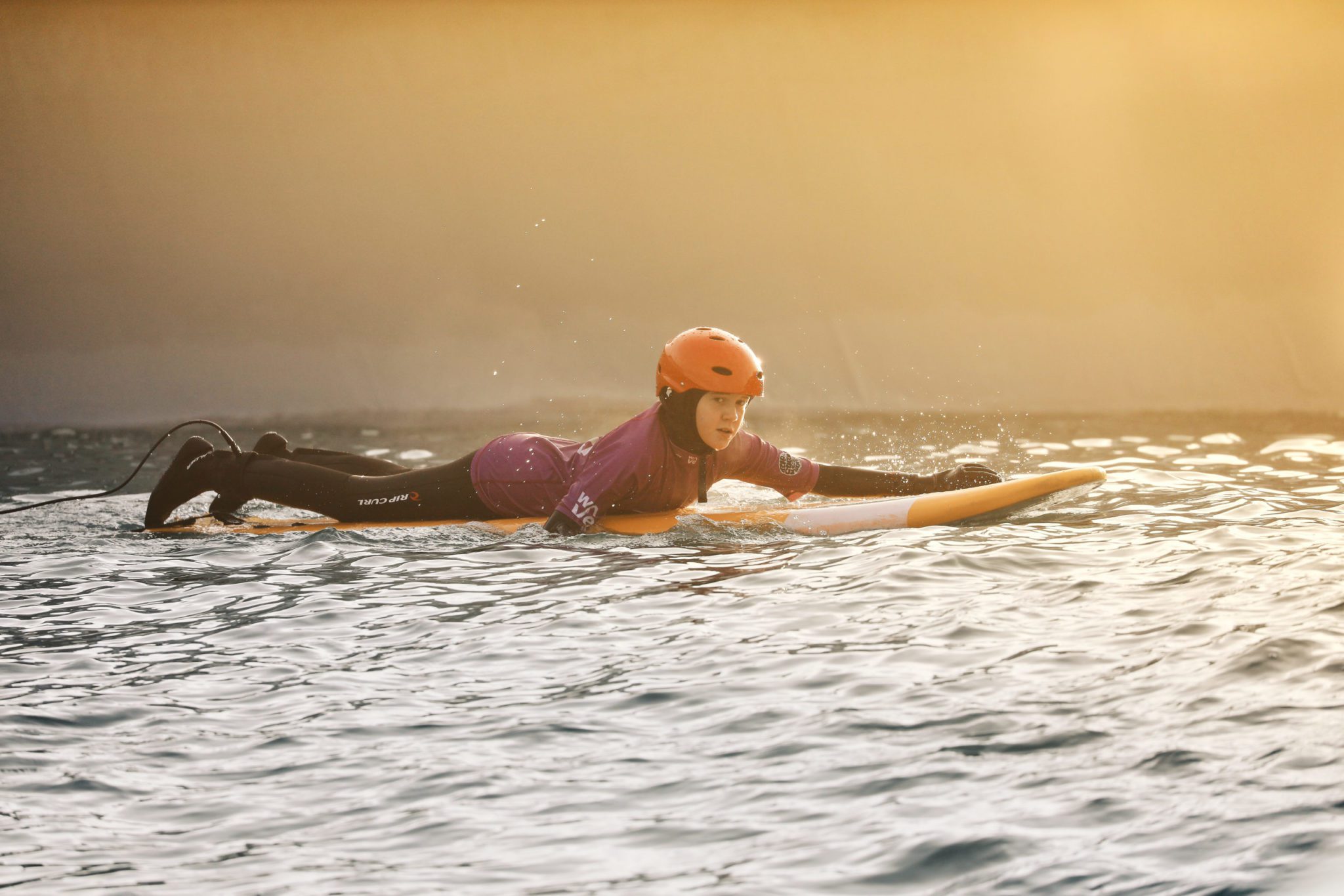By Sam Bleakley
A Zen moment is when we truly feel the joy of complete openness and awareness. Meditators practice this mental state so they are not weighed down by thought or emotion. Soaked in martial arts movies, we may think that only a few highly dedicated Buddhist and Taoist monks could reach such states. However, Zen has no hierarchy or sense of privilege: it is available to everyone, everywhere, for all aspects of life.
And the promise of Zen through surfing is also there for everyone. People of all shapes, sizes and backgrounds can ride waves and chase this promise of Zen. Water welcomes everyone, and we can all embrace the soak of surfing and the thrill of waves. Water is a great leveller and healer for our insecurities and surfing can be a way of feeling strong, healthy and beautiful, outside of the media’s narrow dictation of body and image norms.
Mindfulness, also, is not just a meditation technique. Rather, it is an artful way being-in-the-world that deepens our experiences. This is about being fully immersed, moment-to-moment. It is qualitative, connective, sometimes leading to Zen moments that can fill the heart and soul with riches. But how can these Zen moments really have value in surfing if the activity supports social discrimination? It was mindless of surfing to constellate around white youth culture in 1950s California, especially as prone waveriding developed independently around the Pacific, Indian and Atlantic Oceans, thousands of years ago, while stand-up surfing was practiced in ancient Hawaii as the sport of queens and kings. It was mindless to ban black people from so-called ‘whites only’ beaches in apartheid South Africa (where there is now a thriving black South African surf culture). It was mindless to think that kids with cerebral palsy couldn’t be taken surfing.
Thankfully mindfulness in surfing has now given rise to extraordinary programs for inclusivity to allow people to experience the Zen of surfing. A number of excellent surf schools around the planet work with vulnerable young people at risk of, or diagnosed with, mental health issues, learning difficulties or physical challenges. The visually impaired are taught to ‘see otherwise’ and the deaf to ‘hear otherwise’ as other senses become attuned. This is true mindfulness in action, and a great symbol of the Zen of surfing.
Paddling out can be a way to shatter long-standing stereotypes in some communities, where the ocean is a place of liberation. In examples from Bangladesh to Papua New Guinea, women have been breaking down social barriers through surfing for many years. And people who do not want to break tradition by appearing in revealing swimming costumes, can now ride waves with appropriate modesty in an ever widening variety of adapted surf suits and hijabs, from Iran to Oman.
At surf clubs in the patrilineal (male-led) areas of Papua New Guinea, by painting the noses of half of all surfboards pink, female surfers are given exclusive ownership of boards and equal status (in a staunchly patriarchal society) is made visible. While not necessary in the matrilineal (female-led) areas of the country, where it counts, this simple tool promotes women’s participation and gives greater recognition in the waves. The pink nose is a symbol of open values. Ruthy Kurumuk, one of the locals in the thriving surf scene in a place called Tupira explains, “I’m proud to ride the pink nose. It’s really making a difference. In the past, we had conflicts with men about what boards to take. When the boards are painted pink, that’s the difference - us women have a chance to go out and surf. This gives me an equal place, standing tall.”
More and more surf schools are also now using surfing to work with people who have suffered from isolation or bullying, or traumatic life experiences, such as exposure to violence and poverty. Being in the water helps to calm the mind. And riding a wave creates a rush of excitement and pride. Surfing also promotes resilience, which is critical to long-term wellbeing. Getting wiped out and climbing back onto your board to do it again then boosts self-esteem.
One of the most powerful examples of the transformative benefits of surfing-as-therapy was achieved when an eight-year-old called Madi Eddy walked for the very first time after completing a six-week surfing course with The Wave Project in Cornwall. After years of failing to find a positive therapy for her cerebral palsy and epilepsy, Madi started going into the sea on a specially adapted beach wheelchair, supported by instructors who played with her. Then she started riding a board prone, then standing with assistance. And this was the breakthrough she needed to start walking back on land. The difference was confidence. If you rise up on that board, with momentum and water making you feel as light as a feather, then you can do it on land. But even if you don’t stand, riding a wave prone can be a sense of achievement you will carry with you. ‘Standing tall’ is also a great metaphor for life.
Adaptive and para surfing - that can accommodate amputees, quadriplegics, and people with cerebral palsy - is one of the most exciting aspects of modern waveriding, bringing joy to thousands around the planet, with pioneering board designs, national events, world titles and specialist magazines. The likes of South African Bruno Hansen and Brazilian Davi Teixeiria are teaching others to challenge themselves and overcome their own fears. Here, the water provides a medium where physical and mental barriers can be broken, movement happens more freely, and a deeper connection to nature is fostered. Water can be a place to heal scars and specialist equipment is allowing adaptive and para surfers to ride inside the barrel, where time stands still, and we all share the joy of ‘standing tall’ back on land. And surfing, as an activity of opportunity, must continue to offer Zen moments for an ever-widening diversity of people.
